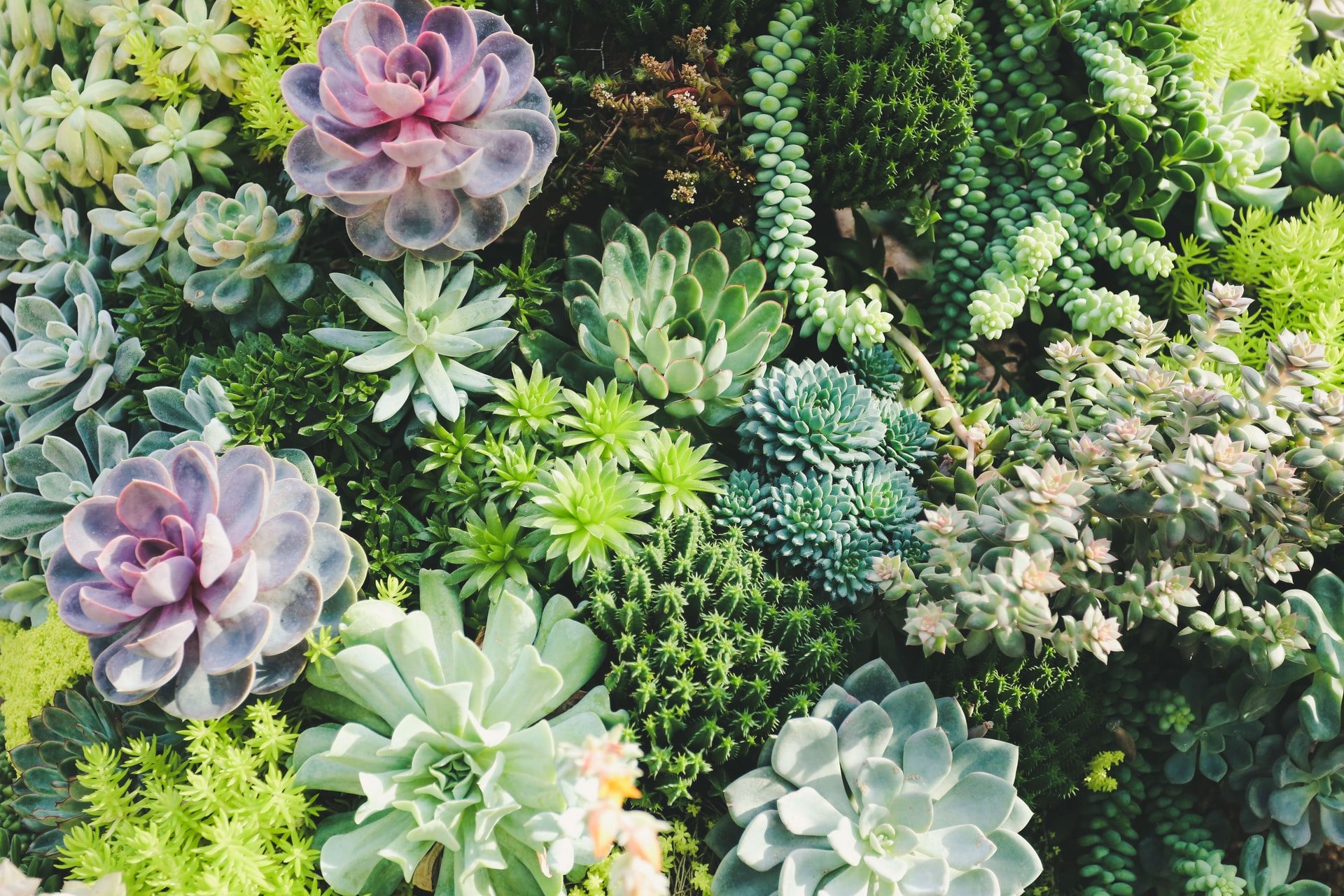
Succulents are well known and loved for being beautiful, versatile, and easy to care for. There are many stunning and unique succulent varieties to grow, and they don’t need a lot of water or attention, just a sunny window. How much light do succulents need, though? How can you tell if your succulent is getting too much or not enough light? Which succulent types are best for your lighting situation? We’re going to answer all your questions so you’re prepared for keeping your succulent happy and healthy!

How much light do succulents need?
This can vary between different succulent varieties, but as a general rule your succulents should get roughly six to eight hours of sunlight a day. Most succulents do best with direct or mostly direct sunlight, but succulents that have been previously kept in darker environments will need to be moved into sunlight slowly to avoid burns.
Shade is not an immediate death sentence for most succulents. In fact, many succulents can survive in shade, or with only indirect light, for an extended period of time. However, succulents without proper lighting will become sickly and do not thrive. Just because they can survive a situation doesn’t mean it is healthy for them.
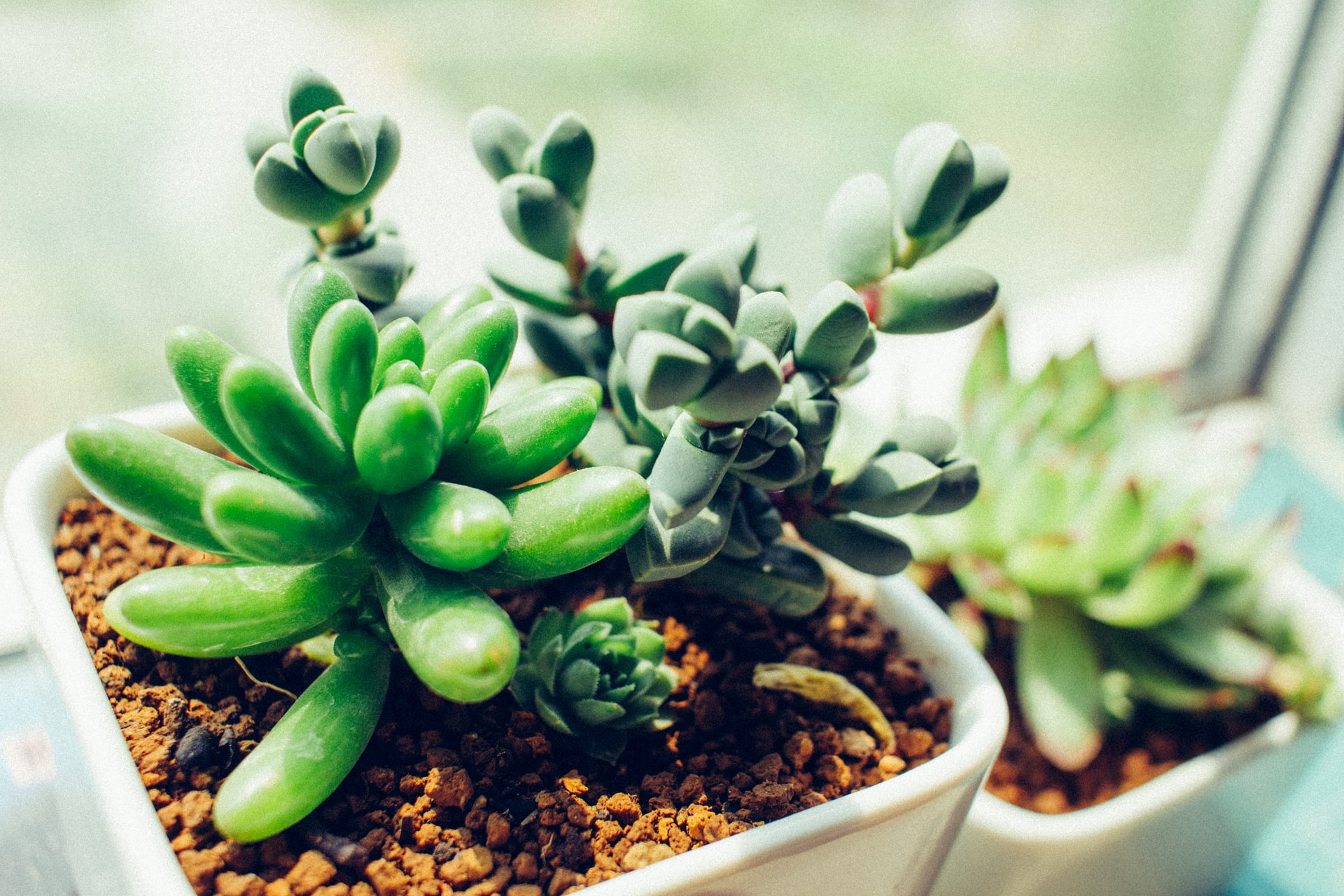
Selecting succulents for your home
If you have a nice, south-facing window or a small grow light you can pick any succulent you’d like. However, for those who have less than optimal lighting conditions, you may be wondering which succulents are a good fit for you. Here are a few succulent varieties that tolerate low light better than most.
Snake plants are truly excellent succulents for areas with low light. They are difficult to kill, extremely low maintenance, and look stunning. Snake plants are notable in that they not only tolerate low light but can actually maintain healthy growth in it. They still prefer direct light, and grow more slowly in low light, but can be kept in shadier areas without any adverse effects.
Gasteria, also called ox tongue, is a less common succulent, but it’s perfect for low-light situations. Gasteria is native to South Africa and naturally grows in partial sun to light shade. It resembles aloe, another potential low-light succulent, and is harder to find but worth the hunt.
Rhipsalis, or mistletoe cactus, is another hardy succulent. It’s thin, branching appearance makes for a conversation starter in any room, and it’s remarkable resilience means you don’t need to worry about it. Rhipsalis prefers bright, indirect light, making it a great desk plant, but it can survive with less light for an extended period of time. If you have an area that gets decent light for most of the year but is relatively dark for one or two seasons, rhipsalis may be the succulent for you.
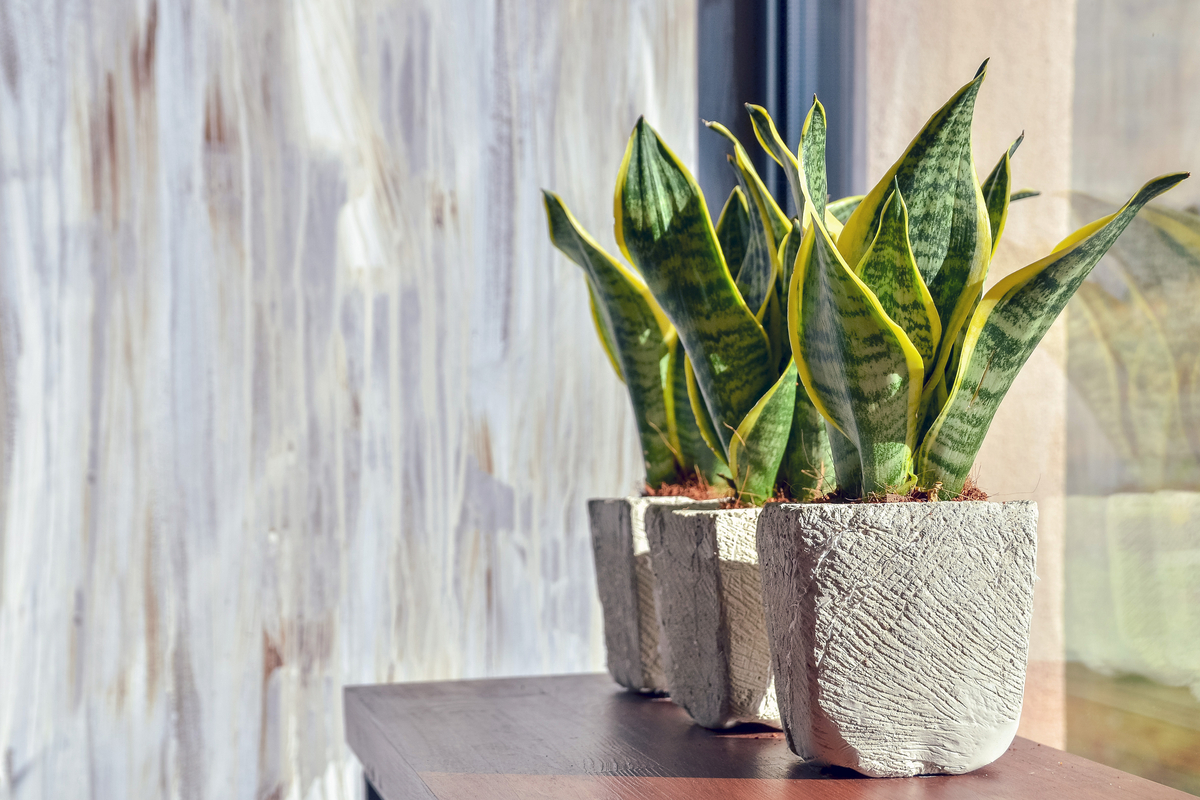
Signs your succulent is getting too much light
Every succulent is a little bit different, but there are a few consistent patterns you can look for when determining if your succulent is getting too much or not enough light. Dark spots appearing on your succulent’s leaves that aren’t typical for that variety can be a sign of too much sun. These sunburns occur when a succulent that isn’t used to direct light is placed in it for too long.
The issue could be one of two things. Either the succulent variety is one that prefers indirect light or the succulent itself has been grown without direct light and has been suddenly shifted. If it is a question of variety, moving the succulent farther away from the window or placing a light curtain over the window will help. If the problem is with the individual succulent, move it back into shade or indirect light and slowly move it into direct light to let it build up a resistance to burns.
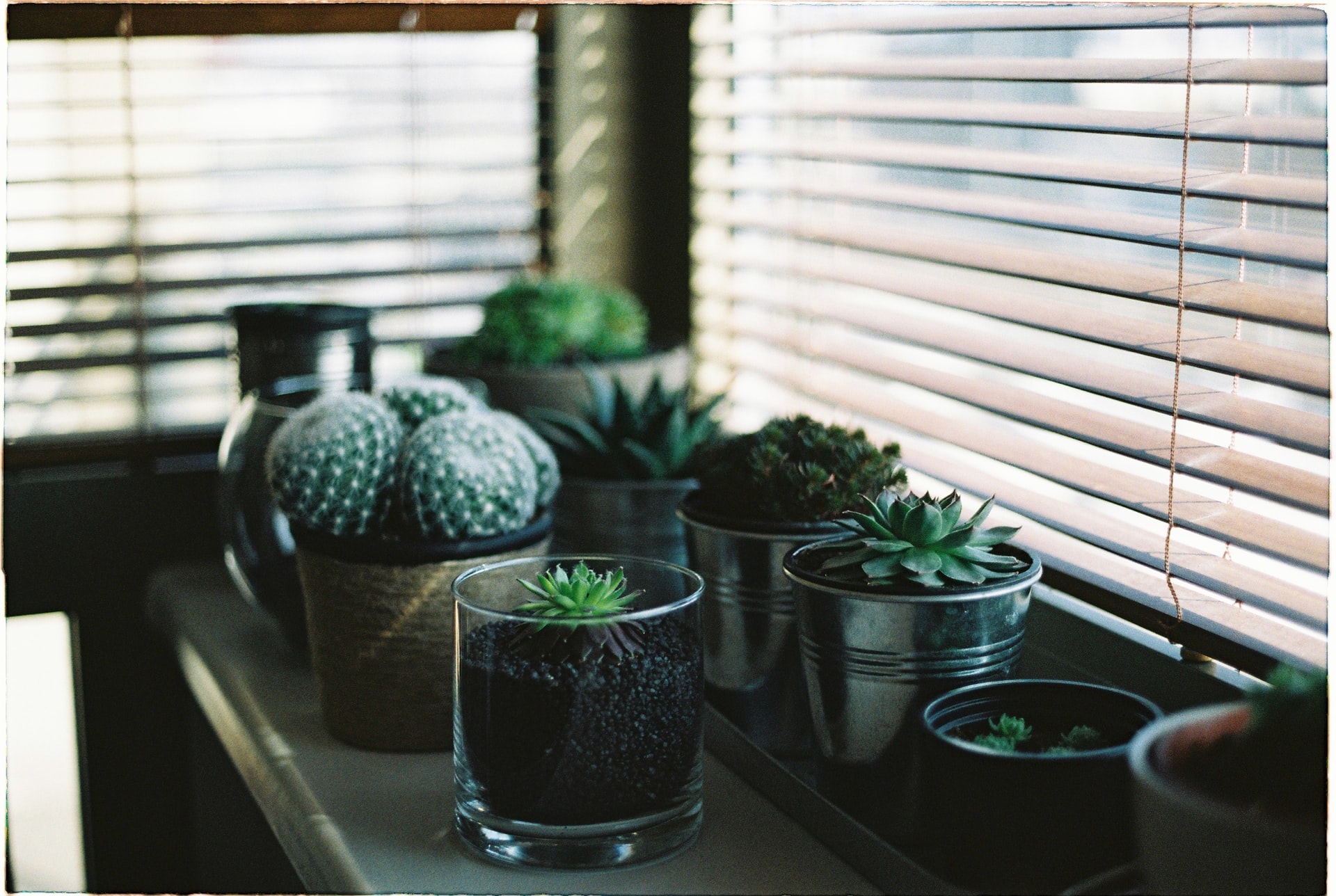
Signs your succulent isn’t getting enough light
The main sign of light deficiency is a succulent that is stunted and leggy. This looks a little different depending on the succulent variety but generally means that your succulent isn’t growing the way it should. This usually means smaller leaves and more upwards or sideways growth than is normal. In rosette-forming succulents, like echeveria, this is fairly easy to spot.
It can be more difficult to see in vertical-growing succulents, such as bear paw or panda paw succulents, but can be spotted if you look for smaller than average leaves or a noticeable lean toward the nearest light source. If your succulent isn’t getting enough light, move them into a brighter lit area slowly to avoid burns. Place them in indirect light first for a few days, then gradually shift them into more direct light if required.
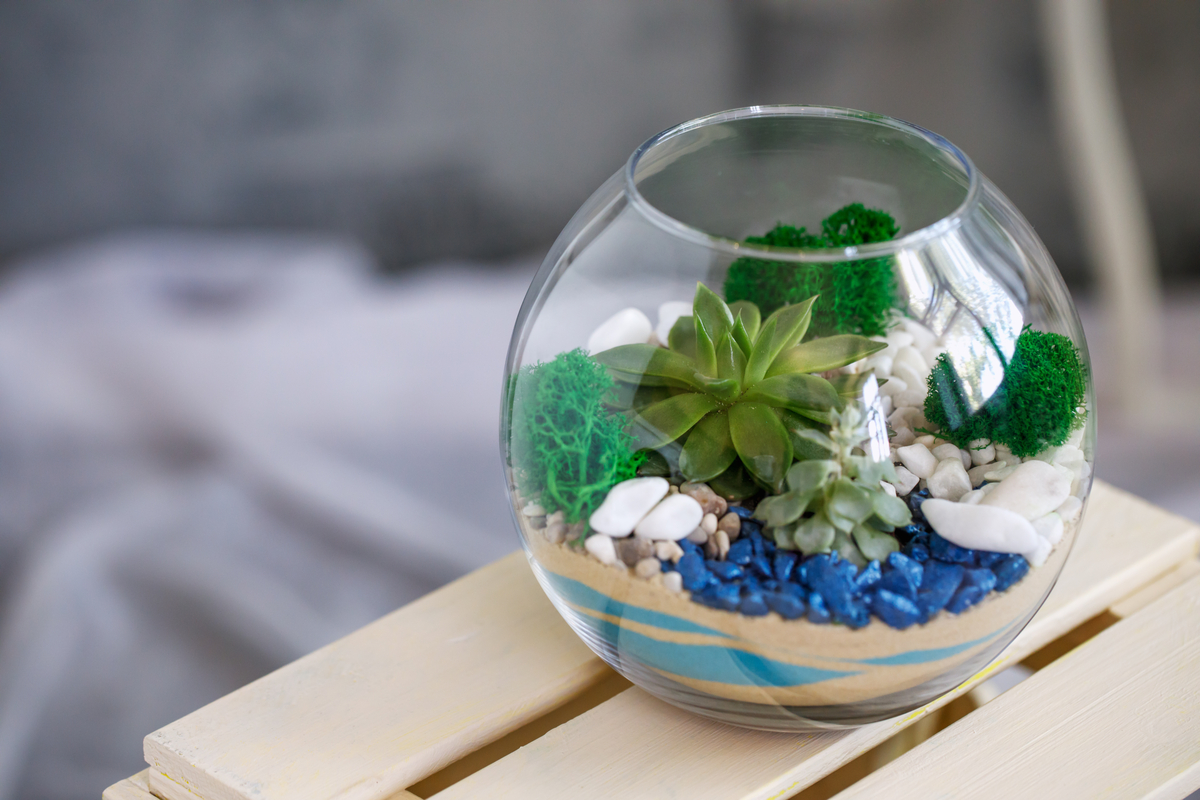
Can succulents survive with only artificial light?
If your home doesn’t have a sunny enough spot for your succulents, then you may want to pick up a grow light. Grow lights can be used to supplement natural light, but can they fully replace it? The answer is yes! Keep in mind that succulents need a lot of light, so it’s typically more efficient to use grow lights as a supplement than as a full replacement. However, if that isn’t an option then you can grow succulents with a grow light alone. Look for LED lights that are labeled as energy efficient, as these will be strong enough to support your succulents without causing your electric bill to skyrocket. You can find plant-specific grow lights online or in gardening stores, but they are also typically sold in home improvement stores.
Knowing the variety of succulent you have and what its specific care requirements are is important when figuring out how much sun to give your succulent. However, by following this simple guide you can safely deal with all your succulent’s lighting needs, regardless of variety. Start with a baseline of six to eight hours of bright light a day, and then listen to your plant. If you see burns and drying leaves, it needs less light. If the succulent has stunted growth or more sideways growth than is normal, it needs more light. Keep these things in mind and your succulents will thrive!


